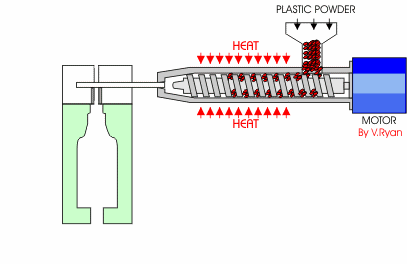Blow moulding remains as one of the most commonly used processes in the
manufacturing industry. Many Australia-based manufacturing companies greatly
depend on this process, especially those that manufacture plastic materials and
products like chairs, tables, hair combs, utensils, containers, wire spools,
bottles, toothbrush, and electronic devices’ parts. Simply put, blow molding
plays an important role in the manufacturing industry.
Investing on industrial molding machine is one important business
move. Since molding machines are not cheap, you would not to invest on the most
durable and reasonably-priced ones. There are different machine retailers and
suppliers in the country so you should not have a hard time finding one.
However, when you buy a molding machine for your manufacturing business, it is
important that you choose wisely so you will not end up throwing your
investments out of the window.
The tips below will help you find the best blow moulding machine in the Australian market
for your manufacturing business.
1. Know what type of
machine your business needs – Molding machines can
come in different types as they can be used for various applications. Hence, in
order to have an easier time finding the best one for your business, what you
need to do is to know which type of machine your production requires. You would
know which type of machine you need by determining the type of production your
business does, the size of the production, and materials you use and produce.
If you are not quite sure which one to get, it would be helpful to seek the
advice of industry professionals and workers.
2. Talk with sales agents – Since there are several industrial molding machine retailers and
suppliers that are based in Australia what you can do is to talk with their
sales agents. Let them market their machines to you for to know which machines
will compliment your business’ productions. However, do not only depend on the
sales talks, you would also like to do your own research. Keep in mind that
sales agents will do almost anything to persuade you to buy their products, so
they can exaggerate certain features of the machines just to make the sale.
3. Compare the prices and
features – Remember that molding machines are a big
investment so you would need to buy the ones with the best quality and
cost-efficient. Hence, you would want to compare the features and prices of the
machines you included on your short list. Do your research about the features
of these machines, making sure that they can be used for your business’
productions and more. Another factor to consider is the price. Compare the
prices of the same machine from different retailers or suppliers in order to
know which one has the best value for its quality.
4. Consider the
maintenance – As much as possible, only buy a
machine that you will not have a hard time maintaining or repairing. Avoid
machines that have limited after-market parts because once they experience
mechanical failure you may have a hard time finding replacement parts. Hence,
you would want to choose a machine that is easy to maintain and repair. This is
why it would be extra helpful to do your research first about the machine and
its after-market parts and services.
Blow moulding machines can cost your business a fortune so it is
important that you carefully choose the one you will purchase. Do not settle
for substandard machines because it would only cost you more in the long run.
In order for your production to have a seamless flow, make sure to invest on
quality machines that will not fail you without any notice.


